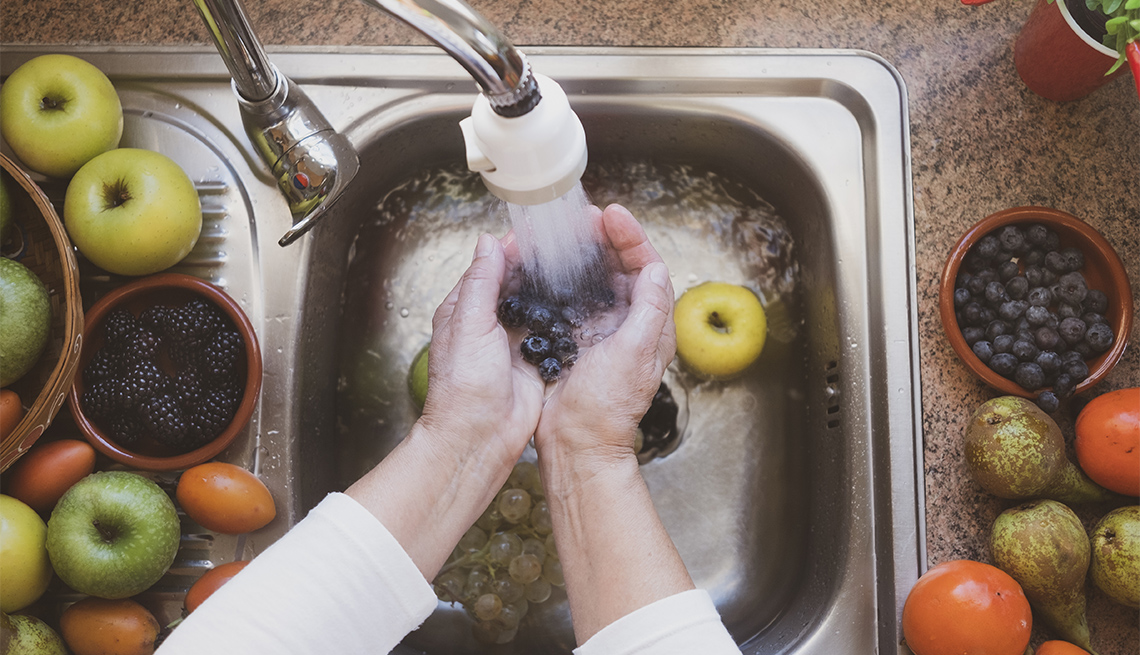
Do You Really Need to Wash Fruits and Vegetables?
- Select a language for the TTS:
- UK English Female
- UK English Male
- US English Female
- US English Male
- Australian Female
- Australian Male
- Language selected: (auto detect) - EN
Play all audios:
lucigerma/Getty Images Facebook Twitter LinkedIn
From farm to table, the fruits, vegetables and other foods we eat come into contact with a lot — people, places, substances and surfaces — before they ever end up on our plates. So, it might
seem obvious that everything we bring home from the grocery store needs a good wash to remove potential pathogens and pesticides from the field.
“Produce comes from the environment; it comes from the ground,” says Meredith Carothers, public affairs specialist at the U.S. Department of Agriculture (USDA). “You can have dirt on it, you
can have bacteria on it. Unlike meat and poultry, which is packaged, a lot of times produce is just out in the grocery store on display.”
But from a food safety perspective, experts say not all foods need to be washed. In fact, rinsing some foods can increase the risk of contamination and cause illness. To help clear up any
confusion, we asked Carothers to break down the do’s and don’ts of food washing.
Produce-Specific TipsFirm fruits and veggies (apples, cucumbers): Wash well or peel to remove waxypreservatives.Soft fruits (peaches, plums): Rinse under running water and dry with a paper towel.Berries, grapes, cherries: Store unwashed, discard moldy pieces, and rinse gently under cool
water before eating.Mushrooms: Wipe with a damp paper towel or clean with a soft brush.Leafy greens: Remove bruised outer leaves, rinse the rest, and soak briefly to loosen dirt.Root
vegetables (potatoes, carrots): Scrub under lukewarm water or peel.Herbs: Dip and swish in cool water, then dry with a paper towel.Hot peppers: Wash while wearing gloves to avoid skin
irritation.Melons: The netted surface of melons, like cantaloupe, can carry microorganisms that transfer to the fruit when cut. You can reduce the risk, but never eliminate it, by scrubbing
the melon with a vegetable brush and rinse under running water before slicing.
Melons are particularly risky due to their pH level, which allows bacteria to grow quickly. Leaving cut melon out overnight can significantly increase pathogen growth. It's best to discard
leftovers after serving and avoid pre-cut cantaloupe wrapped in plastic, as its freshness and safety can’t be guaranteed, according to food safety expert Darin Detwiler.
Source: USDA and Colorado State University
How to clean fruits and vegetablesWash before eating. To slow bacterial growth, wash fruits and vegetables before eating. If you must wash them in advance, dry thoroughly with a paper towel.
Rinse fresh produce under running water. After harvest, fruits and vegetables pass through many hands and surfaces before reaching your grocery store. Before eating, remove any torn or
bruised parts (where bacteria can thrive) and rinse under running water to remove any germs and dirt. Neither the FDA or CDC suggest using products such as vinegar or baking soda to clean
produce.
Scrub firm produce. Foods like potatoes or apples can be scrubbed to thoroughly remove dirt from the exterior, including crevices that rinsing alone may not reach.
Dry produce properly. That means laying rinsed produce on a clean cloth or paper towel to avoid recontamination. If you use a salad spinner, make sure it’s clean before and between batches.